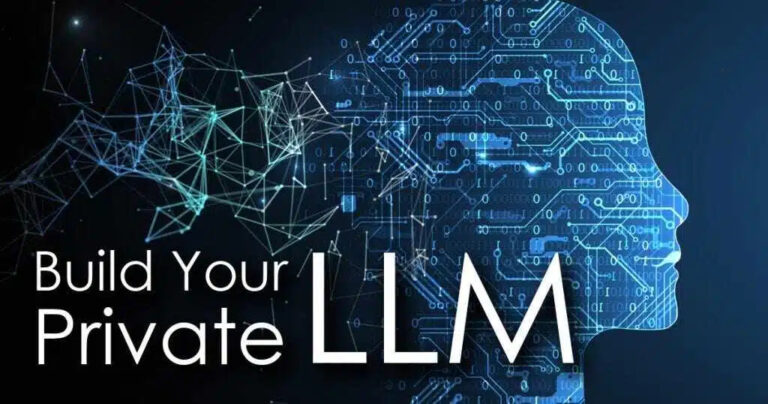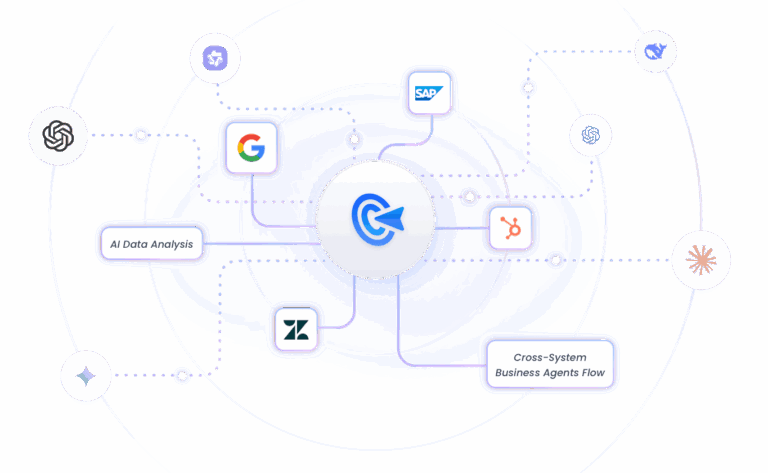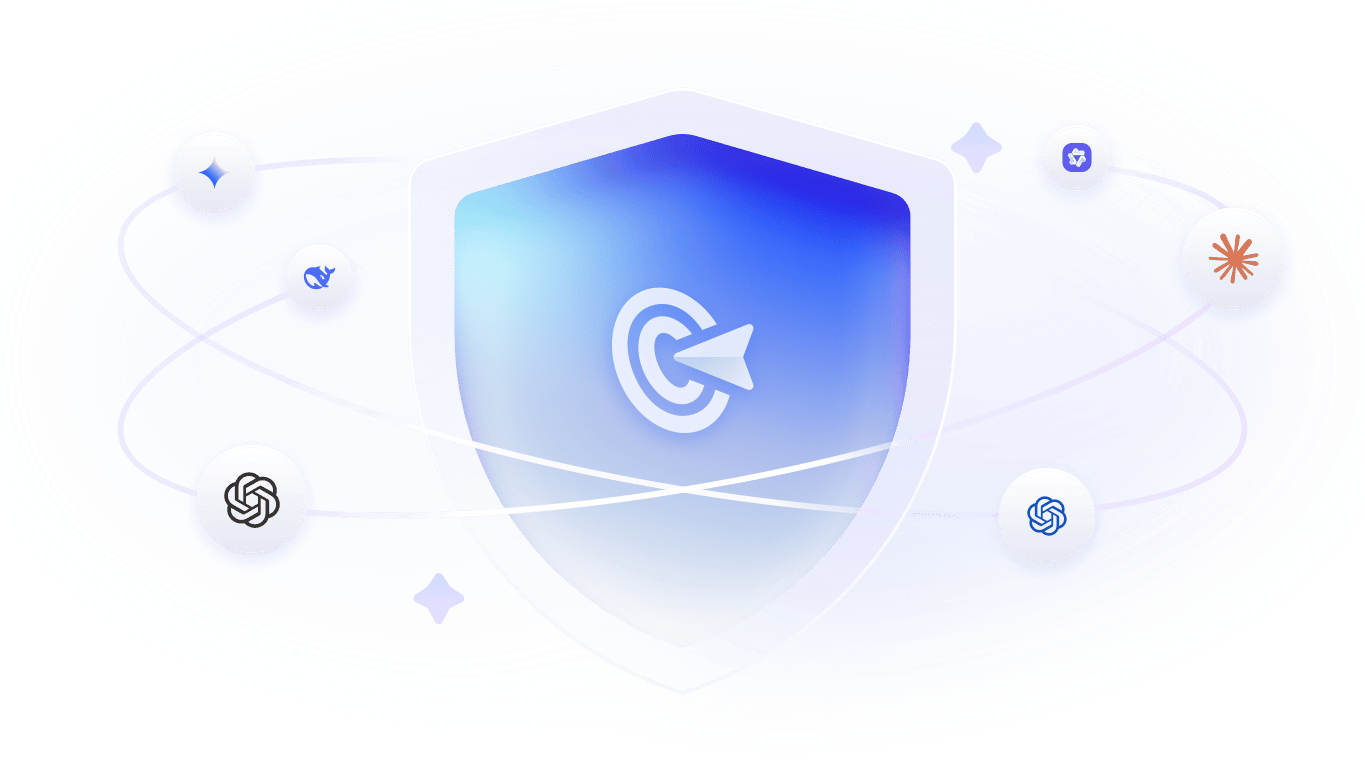As enterprises accelerate AI adoption, data security and compliance have become top priorities. Public LLMs may seem convenient, but sending sensitive information outside corporate boundaries quickly raises privacy and governance risks.
To balance innovation with control, more businesses are trying a safer alternative — the Private LLM.

What Is a Private LLM?
A Private LLM is a large language model that operates entirely within an organization’s controlled infrastructure, either on-premises or in a private cloud environment. It’s designed to bring the intelligence of generative AI to enterprise operations without compromising data security or compliance. By keeping both the model and its data pipeline under internal control, enterprises can safely use AI to power insights, automation, and decision-making.
Key traits of a Private LLM:
- Data isolation: all prompts, outputs, and training data remain within the company’s environment.
- Access control: administrators can define who can interact with or manage the model.
- Compliance readiness: supports data residency, encryption, and detailed audit trails.
- Customization: allows fine-tuning with internal datasets or integration with enterprise knowledge bases.
- Operational flexibility: can be deployed locally, on private cloud, or within hybrid infrastructure setups.
Why Private LLM Matters for Enterprises
1. Ensure Full Data Security & Compliance
Public LLMs require sending prompts and internal data to external vendors, creating risks around leakage, retention, and unauthorized model training. This also makes it difficult to meet strict regulations like GDPR, HIPAA, or financial data residency rules.
With a Private LLM, all data stays inside the company’s controlled environment, making it easier to enforce access policies, preserve audit trails, and maintain full regulatory compliance.
2. Build Domain-Specific, Context-Aware Intelligence
Public LLMs are built for broad, general-purpose use and lack context for industry workflows, internal terminology, or proprietary knowledge. As a result, they generate inaccurate answers for tasks like contract review, policy interpretation, or technical support.
A Private LLM can be trained or augmented with internal documents, knowledge bases, and historical data, enabling high-accuracy responses tailored to the business.
3. Reduce Vendor Lock-In and Lower Long-Term Cost
Using public LLM APIs creates operational dependency, unpredictable pricing, and growing costs as usage scales. Enterprises also lose control over model updates, performance tuning, and latency.
A Private LLM eliminates API lock-in, offering predictable cost structures, on-prem or private-cloud deployment, and the ability to optimize performance based on internal workload needs.
3 Paths to Implement a Private LLM
There are three major paths to implement a private LLM, with each one varying in terms of speed, cost, and control. The right choice for a company depends on its technical resources, budget, and specific requirements.
Quick Comparison Table: Which Is the Best Way to Build A Private LLM
| Method | Cost | Security | Control | Complexity |
|---|---|---|---|---|
| Use RAG | Low✅ | High | Medium | Low✅ |
| Fine-tuning a model | Medium | High | High | Medium |
| Train LLM from scratch | Very high❗️ | Highest✅ | Full Control✅ | Very high❗️ |
1. Use RAG
Retrieval-Augmented Generation or RAG involves connecting a pre-existing, open-source LLM to a company's internal database. When a user asks a question, the system first retrieves relevant information from its private knowledge base, such as PDFs, wikis, and databases. It then feeds this context to the language model at query time, generating a grounded and accurate answer. This approach doesn’t require modifying or training the LLM.
Deployment of RAG is also pretty straightforward. The entire system can run on local servers or a private cloud instance. The retriever and vector database often sit behind the company firewall, while the LLM runs in the same environment to avoid external calls.
Best for:
RAG is an excellent choice for enterprises that need a fast, safe, and auditable solution. It effectively gives a standard model access to proprietary information without altering its core programming. This path allows companies to get practical, domain-aware answers while storing data locally.
2. Fine-tuning a model
The second approach is to fine-tune or customize an existing model, often open-source, to the requirements of an enterprise. It involves adjusting the weights of an existing base model with labeled internal data, prompts, or demonstration examples. This way, the model learns domain-specific language, formats, and decision rules to improve accuracy.
For example, an organization can train the LLM on internal support tickets, legal clauses, or engineering reports so it learns to generate responses in a specific style and domain.
The fine-tuned private LLM model operates behind an organization’s firewall and serves responses via an internal API. Training takes place in a private cloud or local GPU servers, requiring significant computational power.
Best for:
While this approach improves accuracy over RAG for complex tasks, it requires data preparation, ML expertise, and ongoing validation to avoid hallucinations. As such, it is best for companies with sufficient technical expertise or AI/ML teams, clear use cases, and enough quality data to improve accuracy.
3. Train LLM from scratch
This option is more complex as it involves building a foundational private LLM model from ground zero. Training LLM from scratch requires curating a massive text corpus, designing an architecture, working with enormous datasets, and training for weeks or months on high-end GPU clusters.
Companies using this method get absolute control over the architecture, data, and training process. They get a fully custom LLM, but the cost runs into millions, and the data requirements are enormous.
Enterprises deploy and run this LLM in a fully isolated environment, such as on-premise private clusters or dedicated cloud tenancy. Strict network segmentation, hardware security modules, and full audit logging are the key requirements for operating this model.
Best for:
This path is almost exclusively best for large tech companies, research laboratories, or enterprises with nearly unlimited budgets, unique data scale, deep in-house ML expertise, and a strategic need for a unique AI foundation.
Key Considerations When Building a Private LLM
Organizational leaders must take into account several important factors before building a private LLM, as it requires thoughtful planning.
1. Data Privacy & Governance
This step lays the foundation for a private LLM. It requires defining what data can be used, where it will be stored, and who can access it. Plus, dataset classification, encryption, access logs, and role-based permissions can improve data privacy and governance.
2. Infrastructure & Scalability
The cost of GPUs, managing latency for a good user experience, and the deployment setup are major factors to consider. Even small models need RAM and GPU memory. Latency is also crucial, especially for real-time applications. Peak loads may require burstable cloud capacity or a hybrid model.
3. Model Selection
Open-source models, such as Llama and Mistral, grant full freedom in terms of inspection and control but vary in quality. Commercial options may reduce time-to-value and provide better support, but they don’t give enough control. It is a good idea to start with a model that balances performance, license terms, and community support.
4. Compliance
Keep in mind HIPAA, SOC 2, GDPR, and other regulations since each of these imposes specific requirements on data handling. Audit trails, data residency, and role-based access will help satisfy regulators. Always prepare documentation for auditors showing how data flows and what’s logged.
5. Maintenance
Maintenance activities involve continuous updates, performance monitoring, and iterative improvement for the model to remain effective and secure. Plan for regular re-embedding (in RAG), retraining cycles (in fine-tuning), and monitoring for accuracy decay or bias.
GoInsight.AI: Enabling Enterprise-Ready Private LLMs
Enterprises adopting Private LLMs need more than a model—they need a secure, compliant, and governable platform that protects data while enabling intelligence at scale.
GoInsight.AI delivers exactly that: an enterprise-grade AI environment designed for full data sovereignty, encryption, and auditability. It ensures that every model interaction, workflow, and dataset stays within your organization’s trusted boundary, making Private LLM adoption both powerful and safe.

Key Capabilities:
- Data Sovereignty: Deploy models in private or hybrid clouds with full ownership and zero external data training.
- Secure RAG Integration: Connect internal knowledge bases through RAG while maintaining strict privacy boundaries.
- Granular Access Control: Manage roles, permissions, and collaboration with fine-grained visibility.
- Audit & Compliance: Track every action and API call with detailed logs and compliance-ready reporting.
Empower your enterprise to move beyond experimentation and truly operationalize Private LLMs with confidence. Explore how GoInsight.AI transforms secure AI into a competitive advantage.
Conclusion
Private LLMs allow enterprises to harness LLMs and reclaim control while keeping sensitive data inside enterprise borders. Implementation varies since there are multiple options for different levels of technical maturity and resource availability. The choice also depends on scale, staff, and tolerance for operational complexity.
The common thread is the regained command over data, ensuring that AI serves the business on its own terms. It is best to start small, validate rigorously, and scale once your chosen approach proves its value.






Leave a Reply.